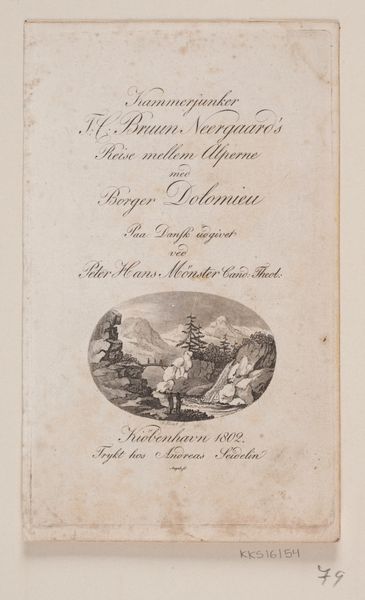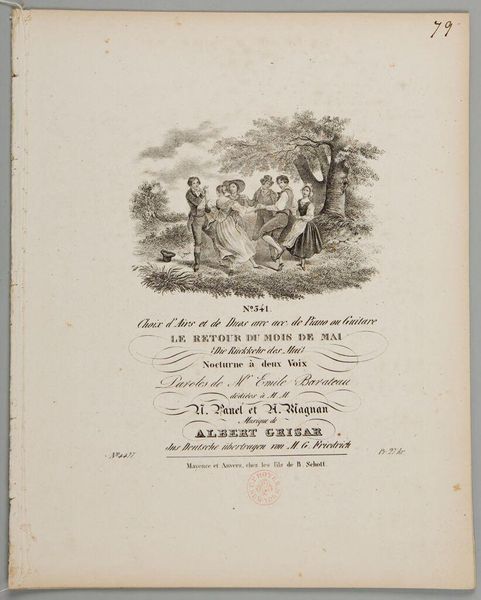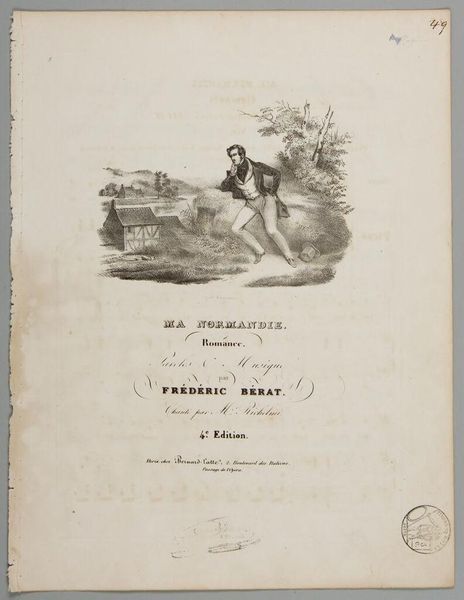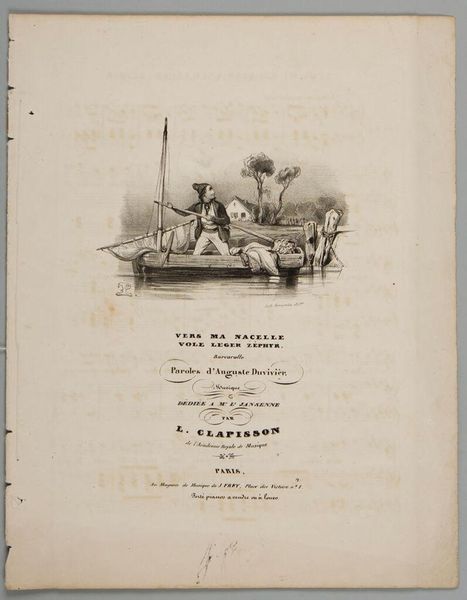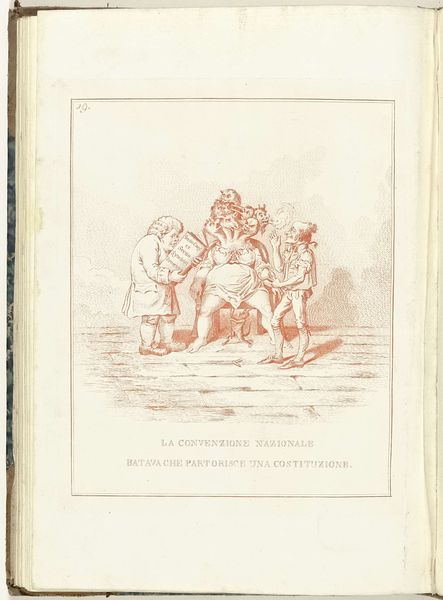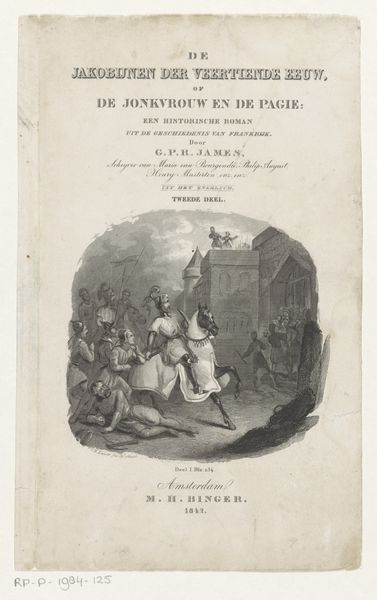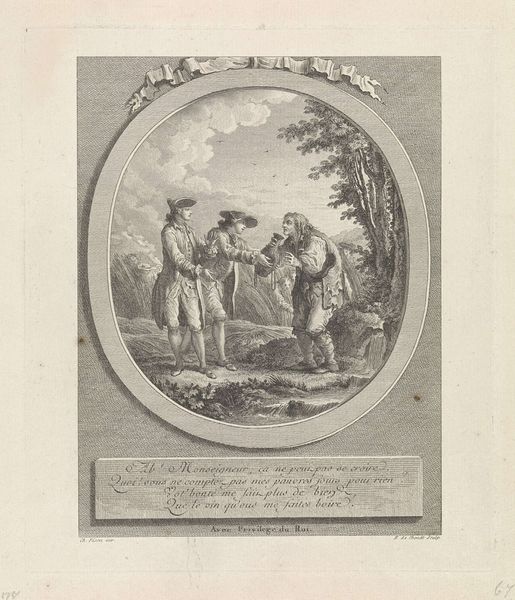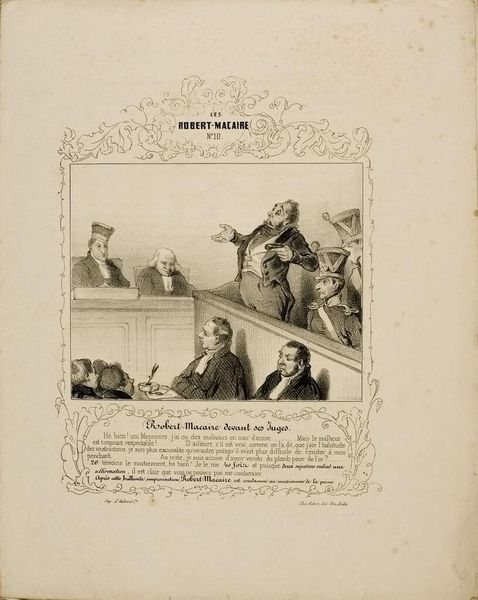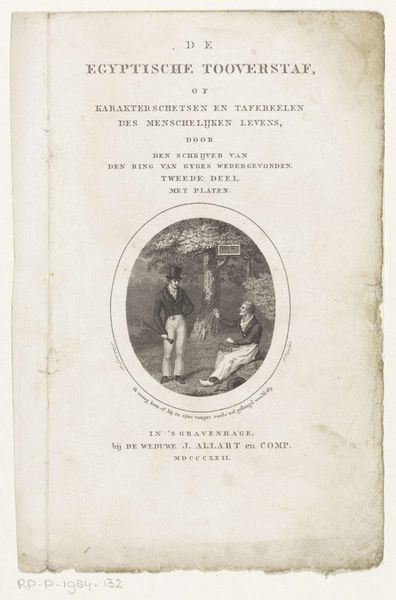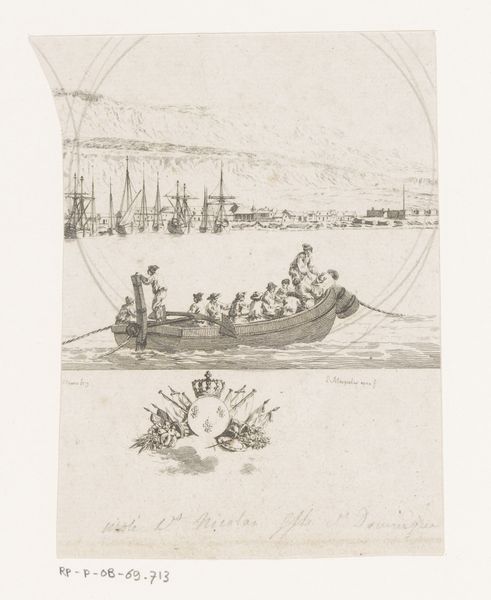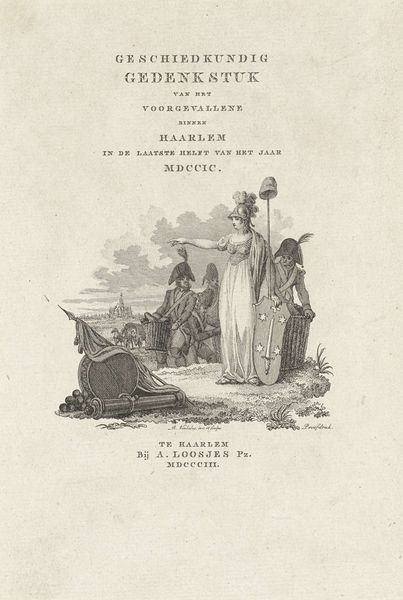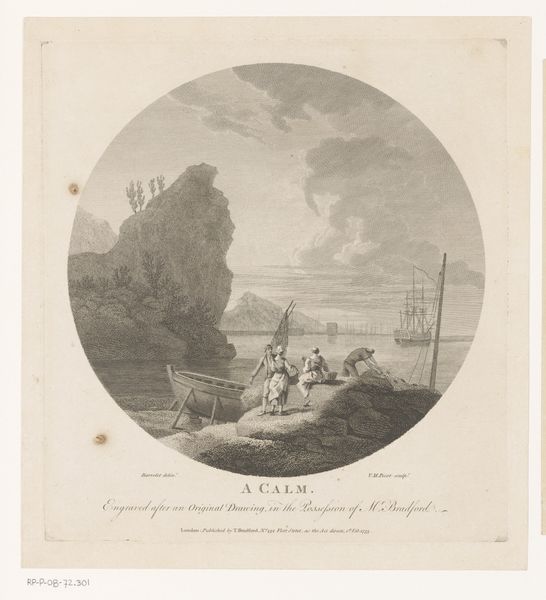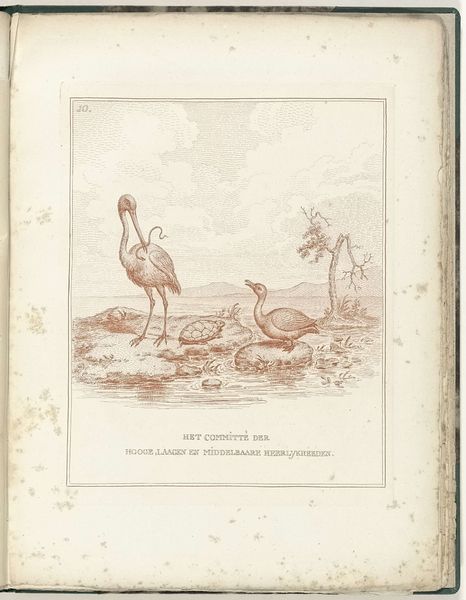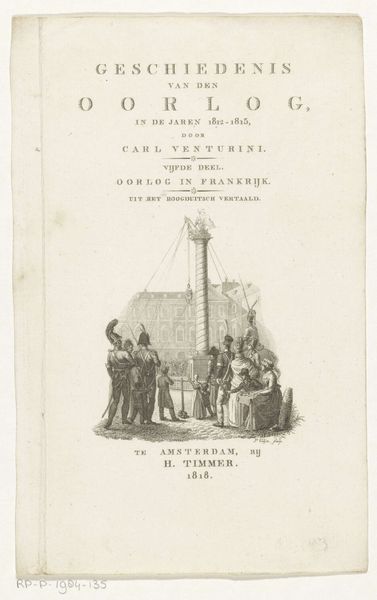
print, typography, engraving
#
narrative-art
# print
#
landscape
#
figuration
#
typography
#
romanticism
#
engraving
Dimensions: height mm, width 144 mm
Copyright: Rijks Museum: Open Domain
Curator: This engraving, "Ontmoeting tussen twee boten," which translates to "Encounter between two boats," dates back to 1837. The artwork, currently residing in the Rijksmuseum, is attributed to Johannes Steyn. The use of printmaking as the chosen medium brings with it its own inherent complexities. Editor: Oh, it’s got this hushed, romantic feel, doesn’t it? A story caught in a breath. The figures in their little boats feel so…contained. It's almost like a daydream fading at the edges. Curator: It is interesting you note this quality as it also prominently features typography in service of illustrating a family story. We have a combination of text and imagery working together within the same medium to enhance one another. The social context surrounding the use of print as a distribution method for storytelling adds another fascinating layer to consider. Editor: Exactly. And isn’t there a delightful, almost coy intentionality to the way they're staged? Like a carefully arranged tableau, waiting for the curtain to rise or maybe drop. And the texture…the way the engraver coaxed those subtle gradients and the meticulous detail... Curator: Yes, Romanticism emphasizes the value of these landscapes as symbolic carriers. Consider the conditions required for printmaking. The tools, labor, access, the materiality of ink and paper—they all shape the image as much as the hand of Steyn himself. How might we view labor, or even the consumption and production of family stories through such a material analysis? Editor: A worthy and important effort! But looking at it this way... there’s a certain stillness. It pulls you back to a slower time. It's an echo chamber for our own memories of lazy afternoons and whispered secrets. I mean, these people, those boats... They’re reflections, perhaps of hopes, lost connections and maybe stories we didn't read. Curator: True. I appreciate you drawing the audience to consider Steyn's material. Printmaking allows for multiplicity and consumption on a different scale, reaching wider audiences. I can appreciate it for how it demonstrates that narratives are both told and produced through multiple registers. Editor: Ultimately, I see this piece, less for the historical, and more for its tender gesture towards quiet contemplation.
Comments
No comments
Be the first to comment and join the conversation on the ultimate creative platform.
